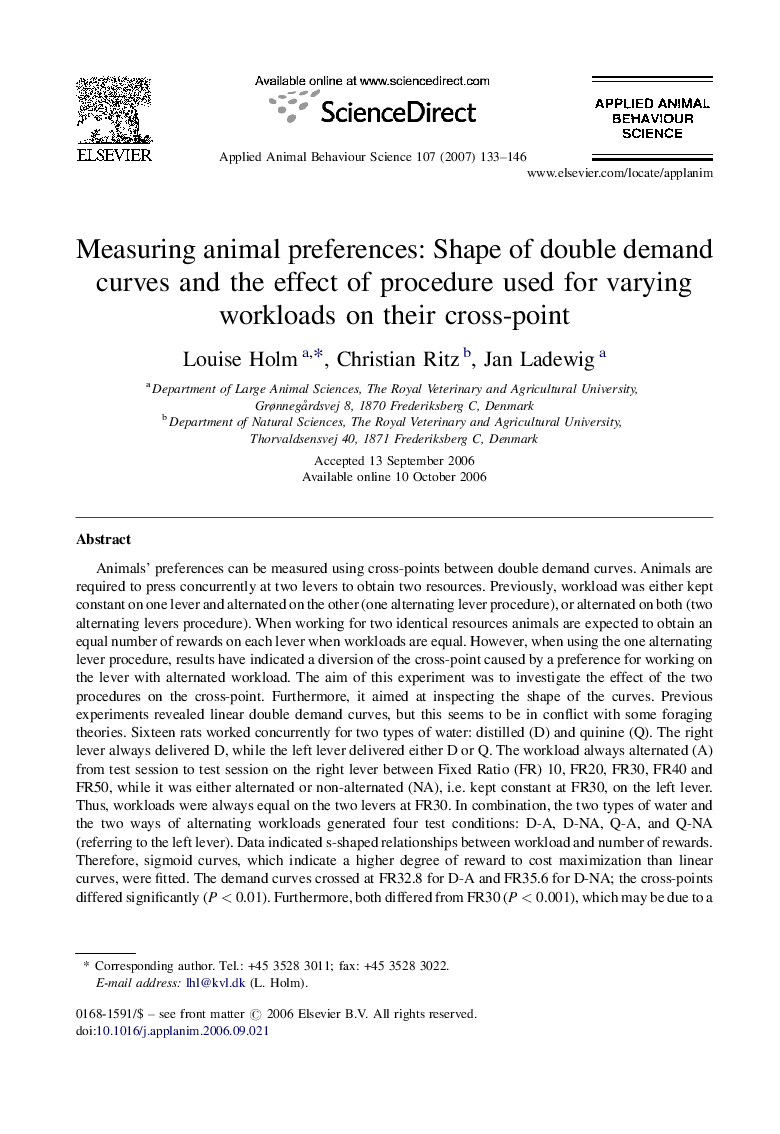| Article ID | Journal | Published Year | Pages | File Type |
|---|---|---|---|---|
| 4523941 | Applied Animal Behaviour Science | 2007 | 14 Pages |
Animals’ preferences can be measured using cross-points between double demand curves. Animals are required to press concurrently at two levers to obtain two resources. Previously, workload was either kept constant on one lever and alternated on the other (one alternating lever procedure), or alternated on both (two alternating levers procedure). When working for two identical resources animals are expected to obtain an equal number of rewards on each lever when workloads are equal. However, when using the one alternating lever procedure, results have indicated a diversion of the cross-point caused by a preference for working on the lever with alternated workload. The aim of this experiment was to investigate the effect of the two procedures on the cross-point. Furthermore, it aimed at inspecting the shape of the curves. Previous experiments revealed linear double demand curves, but this seems to be in conflict with some foraging theories. Sixteen rats worked concurrently for two types of water: distilled (D) and quinine (Q). The right lever always delivered D, while the left lever delivered either D or Q. The workload always alternated (A) from test session to test session on the right lever between Fixed Ratio (FR) 10, FR20, FR30, FR40 and FR50, while it was either alternated or non-alternated (NA), i.e. kept constant at FR30, on the left lever. Thus, workloads were always equal on the two levers at FR30. In combination, the two types of water and the two ways of alternating workloads generated four test conditions: D-A, D-NA, Q-A, and Q-NA (referring to the left lever). Data indicated s-shaped relationships between workload and number of rewards. Therefore, sigmoid curves, which indicate a higher degree of reward to cost maximization than linear curves, were fitted. The demand curves crossed at FR32.8 for D-A and FR35.6 for D-NA; the cross-points differed significantly (P < 0.01). Furthermore, both differed from FR30 (P < 0.001), which may be due to a preference for pressing the right lever that never delivered quinine water. Due to a strong preference for distilled water, the shape of the Q-A and Q-NA curves could not be determined. Since the cross-point was significantly higher for D-NA than D-A, we suggest that the two alternating levers procedure should be used in future experiments. However, it can be argued to use the one alternating lever procedure if substitution between the resources has not been established previously, because this procedure reveals lack of substitution more directly.
